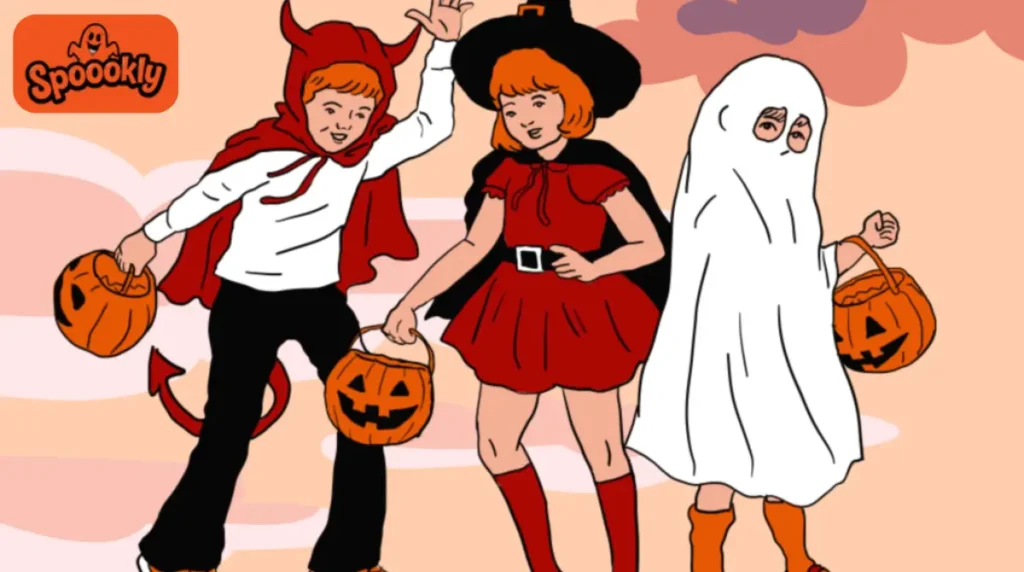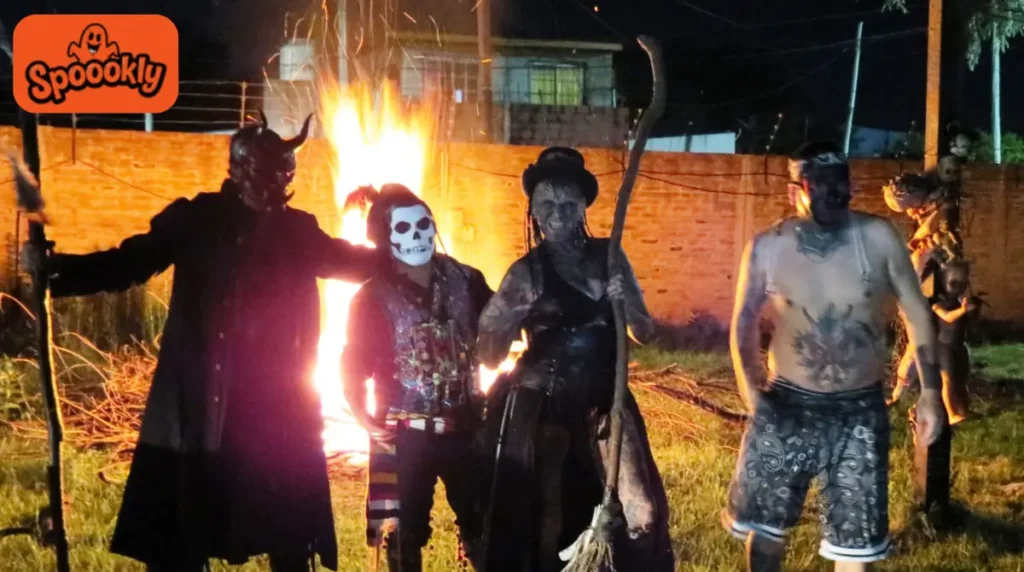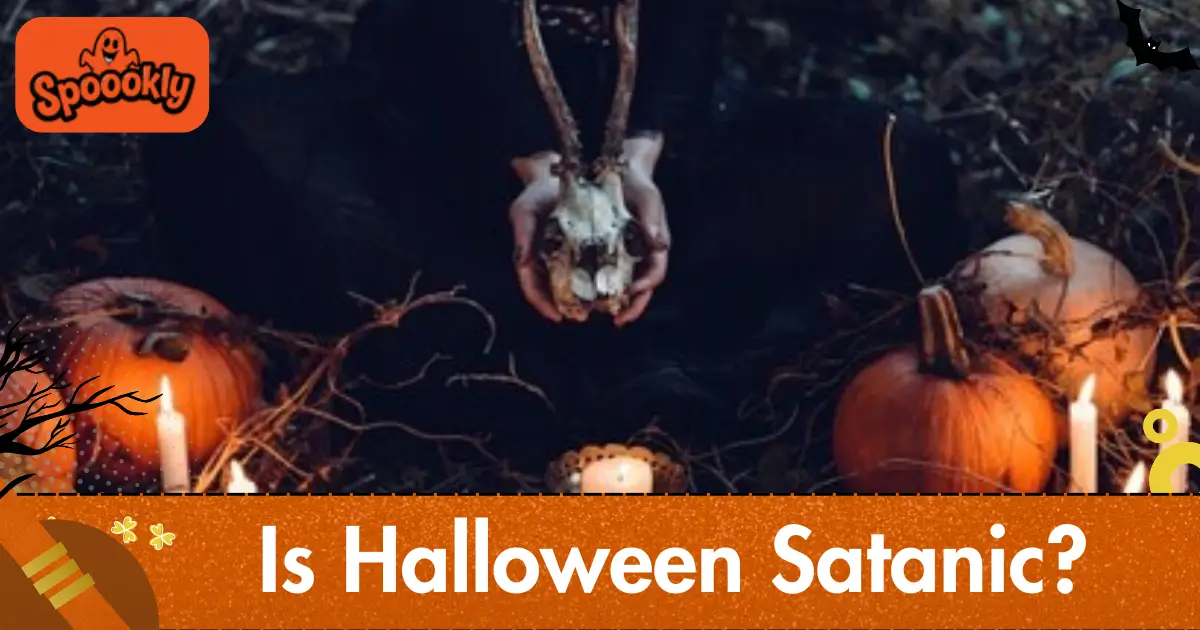Halloween often gets labeled as “evil” or “satanic.” I hear it every year once October arrives. But is Halloween actually satanic? The short answer is no, not in the way most people think.
The celebration we know today is more about costumes, candy, and fun than worshipping anything dark. Still, the claim keeps coming up.
That’s why I want to break this down: the origins of Halloween, how it connects to religion, myths vs. facts, and whether calling it “satanic” makes sense.
By the end, you’ll know the full story and can decide how you feel about it.
What Does “Satanic” Really Mean?
Before anyone can call Halloween satanic, we need to understand the word.
- Satanic usually refers to worship of Satan, rebellion against God, or involvement in organized Satanism.
- Occult means secret or mystical practices, often involving spirits, magic, or fortune telling.
- Pagan refers to pre-Christian religions, like the ancient Celts who honored nature, harvests, and seasonal rituals.
- Witchcraft connects to spells, charms, and folklore not necessarily Satanism.
Here’s the key point: pagan, occult, and supernatural practices are not automatically satanic. Mixing all these terms together creates confusion, which is why the question “Is Halloween satanic?” matters today.
Why People Care About This Question
Halloween is everywhere; schools, churches, malls, even workplaces. Because it includes imagery like ghosts, witches, skeletons, and dark nights, some see it as a dangerous holiday. Others defend it as harmless fun.
In truth, the “Halloween and Satanism” debate is more about symbols, perceptions, and beliefs than about what people actually do on October 31.
The Historical Origins of Halloween
The Celtic Festival of Samhain
Long before modern Halloween, the Celtic people celebrated Samhain (pronounced “sow-in”). This marked the end of the harvest and the start of winter.
- People believed the boundary between the living and dead grew thin.
- Bonfires were lit to ward off spirits.
- Masks or costumes were worn to confuse wandering souls.
Samhain was pagan, but not satanic, Satan was not even part of Celtic belief systems.
How the Church Shaped the Holiday
As Christianity spread through Europe, the church wanted to guide pagan practices into Christian observances.
- November 1 became All Saints’ Day (also called All Hallows’).
- October 31 became All Hallows’ Eve, which over time turned into “Halloween.”
Instead of erasing local customs, church leaders often adapted them. That’s why we see bonfires, prayers for the dead, costumes, and seasonal feasts blend together.
Medieval Customs and Folk Traditions
During the Middle Ages, people practiced:
- “Souling”: going door-to-door offering prayers for the dead in exchange for food.
- Bonfires and lanterns: symbols of light against darkness.
- Masks and plays: ways to mark the season and scare away spirits.
None of this had anything to do with Satan worship. It was about honoring ancestors, managing fears of the unknown, and building community traditions.
Modern Transformations
Fast forward to today: Halloween has become a largely secular celebration. Costumes, trick-or-treating, candy sales, haunted houses, and parties dominate.
Yes, the holiday still has spooky themes, but they’re mostly commercial, playful, and cultural. For most people, Halloween is no more satanic than a scary movie marathon.
Halloween Origins vs. Satanic Claims
| Aspect | Historical Reality | Linked to Satanism? |
|---|---|---|
| Samhain (Celtic) | Pagan harvest & spirit festival | No |
| All Hallows’ Eve | Christian observance before All Saints’ Day | No |
| Medieval “souling” | Prayers for the dead, charity traditions | No |
| Costumes & masks | Folk practice to ward off spirits | No |
| Modern Halloween | Candy, parties, decorations, pop culture | Mostly No |
Halloween has pagan and Christian roots, but not satanic ones. The satanic label came much later, mostly from fear and misunderstanding.

Why Some People Call Halloween “Satanic”
Halloween looks dark on the surface. Witches, skulls, black cats, and haunted houses all seem connected to evil. For some, that’s enough to call it satanic.
1. The Scary Imagery
Skeletons, demons, and ghosts are common symbols. Churches and parents sometimes worry these images glamorize death or invite dangerous curiosity.
2. Fear of Spirit Contact
Because Samhain included beliefs about spirits crossing into our world, critics argue Halloween still carries a risk of occult influence. Some fear that playing with Ouija boards, holding séances, or trying spells on Halloween opens doors best left shut.
3. Religious Objections
Many Christians argue that Scripture warns against witchcraft, divination, and contact with the dead. For them, Halloween’s costumes and practices echo forbidden activities. A few preachers even label October 31 as the “Devil’s Holiday.”
4. Satanist Connections
A small number of modern Satanist groups claim Halloween as one of their own celebrations. They treat it as a night of rebellion or ritual. This connection is rare, but it fuels the perception that Halloween is satanic for everyone.
Counterarguments: Why Halloween Is Not Satanic
Despite the spooky theme, most celebrations are cultural, not spiritual. Buying candy and carving pumpkins doesn’t make anyone a Satanist.
1. Secular and Cultural Nature
Today, Halloween is driven by business and community fun. Candy sales, costume parties, and pumpkin carving contests dominate. These have no link to Satan worship.
2. Symbolism vs. Belief
Just because someone dresses as a witch doesn’t mean they practice witchcraft. Symbols can be playful, not literal. Kids trick-or-treating as skeletons are not expressing faith in death, they’re just having fun.
3. Christian Voices of Balance
Many Christian leaders point out that Halloween is not satanic by itself. Focus on the Family, for example, suggests families use the day to connect with neighbors, share kindness, or host safe alternatives. The intent matters more than the holiday itself.
4. The “Innocent Fun” Argument
Plenty of parents allow Halloween because they see no harm in costumes and candy. For them, it’s simply a chance for children to laugh, play, and enjoy being creative.
5. Where It Gets Risky
The line blurs when people mix in occult practices; spells, curses, or rituals. While these do exist, they represent a small fraction of what people do on October 31.
Arguments For and Against Halloween
| Position | Common Reasons | Response |
|---|---|---|
| Against | Promotes evil symbols, spirit contact, occult practices, “Devil’s Holiday” label | Most traditions are cultural, not worship. Symbols don’t equal faith. |
| For | Fun costumes, candy, neighborhood bonding, creative expression | Caution advised when occult practices are introduced. |
Comparative Views Across Religions
Christianity
- Catholic & Mainline Protestant Churches: Some see Halloween as part of All Saints’ tradition, not satanic.
- Evangelical & Fundamentalist Groups: More likely to reject Halloween, warning against occult links.
- Moderate Christian Families: Many celebrate but filter what they allow; costumes, candy, but not occult games.
Islam
Halloween is generally discouraged or forbidden, as it’s seen as imitating non-Islamic religious practices. Some families allow limited participation in cultural parts, but many avoid it altogether.
Judaism
Jewish communities vary. Some see Halloween as foreign to their tradition and avoid it. Others allow their children to participate casually, treating it as a neighborhood activity.
Non-Christian Cultures
In Asia, Latin America, and parts of Africa, Halloween has been adopted as a fun festival rather than a religious event. For example:
- Mexico: Celebrates Día de los Muertos, which is separate but sometimes overlaps in theme.
- Japan: Halloween is a pop-culture party with costumes, parades, and decorations.
- Middle East: Participation is limited, often seen as a Western cultural import.

Myths and Misconceptions About Halloween
Halloween attracts plenty of rumors. Let’s clear up the biggest ones.
Myth 1: Halloween Is Only for Satanists
Reality: The vast majority of people celebrate with costumes and candy. Satanists are a tiny minority. The holiday’s roots are cultural and religious, not satanic.
Myth 2: Costumes Invite Evil Spirits
Reality: Costumes originally served as protection, not invitations. Today, a child dressing as a superhero or princess has nothing to do with spirits.
Myth 3: Trick-or-Treating Is Occult
Reality: Trick-or-treating grew out of “souling” and community charity traditions. It’s about sharing, not summoning.
Myth 4: Jack-o’-Lanterns Are Evil
Reality: Pumpkins with carved faces trace back to Irish folklore about “Stingy Jack.” They were lanterns, not satanic tools.
Myth 5: Celebrating Halloween Leads to the Occult
Reality: Like watching a scary movie, celebrating Halloween does not turn people into Satanists. Spiritual danger comes only if someone actively pursues occult practices.
Practical Guidance for Families
If you’re unsure about Halloween, here are ways to approach it wisely:
- Set Boundaries: Decide what you’re comfortable with: costumes, candy, but maybe not occult games.
- Choose Alternatives: Many churches host fall festivals or “All Saints’ Eve” events.
- Teach Values: Use Halloween as a chance to talk about fear, faith, and cultural traditions with your kids.
- Be Respectful: If you don’t celebrate, politely explain your choice. If you do celebrate, be mindful of neighbors who don’t.
Safer Ways to Celebrate Halloween
| Activity | Safe Aspect | What to Avoid |
|---|---|---|
| Trick-or-Treating | Fun, community bonding | Unsafe neighborhoods |
| Costumes | Creativity, laughter | Occult roleplay |
| Pumpkin Carving | Family activity | None |
| Parties | Social fun | Spirit games, séances |
| Church Harvest Events | Faith-friendly | N/A |
FAQs
No. Its origins are pagan and Christian, but not satanic. Some groups may treat it that way, but for most, it’s cultural fun.
Many do. Some avoid it. It depends on personal conviction and how one participates.
No. They are symbols drawn from folklore. They only carry the meaning you attach to them.
Halloween focuses on costumes and fun. Día de los Muertos is a Mexican tradition honoring loved ones who passed away.
Conclusion
Halloween has pagan roots, Christian layers, and modern cultural twists. It’s not a satanic holiday. For most, it’s about fun, family, and community.
That said, how you celebrate matters. If you avoid occult practices and focus on safe traditions, there’s nothing inherently satanic in carving pumpkins or handing out candy.
My personal take? Halloween is what you make it. If you treat it as playful, that’s all it is. If you see danger, set boundaries or skip it. Either way, the decision is yours not Satan’s.

